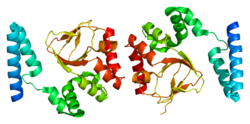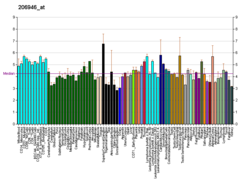Potassium/sodium hyperpolarization-activated cyclic nucleotide-gated channel 4 is a protein that in humans is encoded by the HCN4 gene. [5] [6] [7] [8]
Contents
There are four HCN channels. HCN4 is prominently expressed in the pace maker region of the mammalian heart. [9] Some humans with bradycardia and Sick sinus syndrome have been shown to have mutations in their HCN4 gene. [10] [11] [12] The role of HCN channels in autonomic control of heart rate is currently a matter of ongoing investigation. [13] [14] [15] [16]








